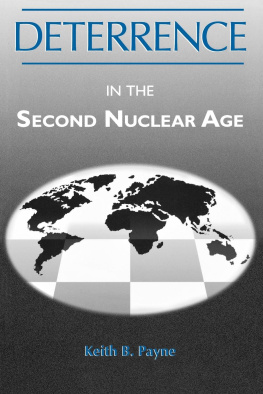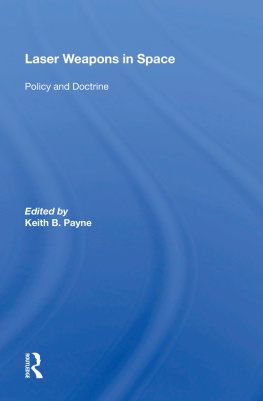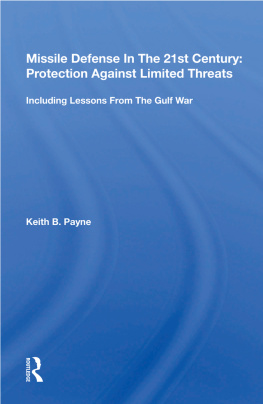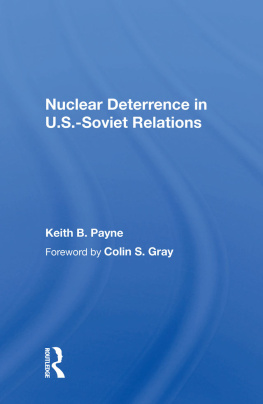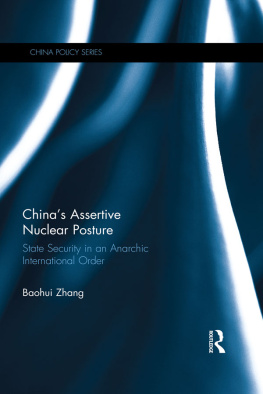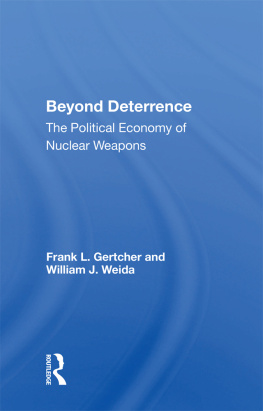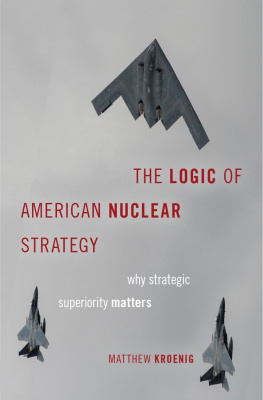Minimum Deterrence: Examining the Evidence
The National Institute for Public Policys new book, Minimum Deterrence: Examining the Evidence, is the first of its kind. Dr. Keith Payne, the late former Secretary of Defense James Schlesinger and an unparalleled bipartisan group of senior civilian and military experts critically examined eight basic assumptions of Minimum Deterrence against available evidence. In general, Minimum Deterrence does not fare well under careful scrutiny.
Proponents of a Minimum Deterrent U.S. nuclear force posture believe that anywhere from a handful to a few hundred nuclear weapons are adequate to deter reliably and predictably any enemy from attacking the United States now and in the future. Because nuclear weapons are so destructive, their thinking goes, no foreign leader would dare challenge U.S. capabilities. The benefits, advocates claim, of reducing U.S. nuclear weapons to this minimum level are: better relations with Russia and China, reinforcement of the arms control and Nonproliferation Treaty, billions of defense dollars in savings, and greater international stability on the way to nuclear zero.
As political pressure builds to pursue this vision of minimum U.S. deterrence, Minimum Deterrence: Examining the Evidence stands as the seminal study to address the many claims of great benefit using available evidence.
This book was previously published as a special issue of Comparative Strategy.
Keith B. Payne, Study Director; President, National Institute for Public Policy; Department Head, graduate school of Defense and Strategic Studies, Missouri State University (Washington, DC campus).
The Honorable James Schlesinger, Chairman, Senior Review Group, former Secretary of Defense; Secretary of Energy; Director of Central Intelligence; Chairman of the United States Atomic Energy Commission.
The National Institute for Public Policy has produced an important and insightful report that is a must-read for policymakers interested in the future of Americas nuclear strategy. At a time when the United States is again weighing reductions in our nuclear weapons arsenal, this report makes a timely and compelling case against the key assumptions of minimum deterrence.
Senator Jon Kyl and Senator Joseph Lieberman
Minimum Deterrence: Examining the Evidence
Keith B. Payne and James Schlesinger
First published 2015
by Routledge
2 Park Square, Milton Park, Abingdon, Oxon, OX14 4RN, UK
and by Routledge
711 Third Avenue, New York, NY 10017, USA
Routledge is an imprint of the Taylor & Francis Group, an informa business
2015 National Institute for Public Policy
All rights reserved. No part of this book may be reprinted or reproduced or utilised in any form or by any electronic, mechanical, or other means, now known or hereafter invented, including photocopying and recording, or in any information storage or retrieval system, without permission in writing from the publishers.
Trademark notice: Product or corporate names may be trademarks or registered trademarks, and are used only for identification and explanation without intent to infringe.
British Library Cataloguing in Publication Data
A catalogue record for this book is available from the British Library
ISBN 13: 978-1-138-78116-0
ePub eISBN 13: 978-1-317-67153-4
Mobipocket/Kindle eISBN 13: 978-1-317-67152-7
Typeset in Times New Roman
by RefineCatch Limited, Bungay, Suffolk
Publishers Note
The publisher accepts responsibility for any inconsistencies that may have arisen during the conversion of this book from journal articles to book chapters, namely the possible inclusion of journal terminology.
Disclaimer
Every effort has been made to contact copyright holders for their permission to reprint material in this book. The publishers would be grateful to hear from any copyright holder who is not here acknowledged and will undertake to rectify any errors or omissions in future editions of this book.
The National Institute for Public Policys website can be found at www.nipp.org
This book was originally published in Comparative Strategy, volume 33, issue 1 (March 2014). When citing this material, please use the original page numbering for each article, as follows:
Preface
Preface
Keith B. Payne
Comparative Strategy, volume 33, issue 1 (March 2014) p. 1
Executive Summary
Comparative Strategy, volume 33, issue 1 (March 2014) pp. 213
I. Introduction: Minimum Deterrence
Comparative Strategy, volume 33, issue 1 (March 2014) pp. 1314
II. Minimum Deterrence and U.S. Policy
Comparative Strategy, volume 33, issue 1 (March 2014) pp. 1417
III. Minimum Deterrence: Assumptions, Logic and Conclusions
Comparative Strategy, volume 33, issue 1 (March 2014) pp. 1718
IV. Examining and Testing the Fundamental Assumptions and Logic of Minimum Deterrence
Comparative Strategy, volume 33, issue 1 (March 2014) pp. 1968
V. Summary and Conclusion: How Does Minimum Deterrence Fare Against Available Evidence and What Alternative Guidelines May Be Better?
Comparative Strategy, volume 33, issue 1 (March 2014) pp. 6877
Please direct any queries you may have about the citations to clsuk.permissions@cengage.com
In Memoriam, The Honorable
Dr. James R. Schlesinger
It is with great sorrow that I note here that on March 27, 2014, just as this text was in final preparation for publication, Dr. James R. Schlesinger passed away at the age of 85. Dr. Schlesinger served with enthusiasm and energy as the Chairman of the Senior Review group for this work. He was very pleased with the ultimate product presented here and encouraged its wide distributionpersonally asking that it be sent to a list of recipients.
With Dr. Schlesingers passing, we have lost an incomparable leader, brilliant scholar, sincere patriot, generous mentor and friend, and beloved family man. He dedicated his professional life to protecting the security of the United States and Western Civilization, and the results of his efforts are nothing short of monumental. During his government career he served under Republican and Democratic presidents, including as Chairman of the Atomic Energy Commission, Director of Central Intelligence, and the first Secretary of Energy. In 1973, at the age of 44 and the height of the Cold War, Dr. Schlesinger became Secretary of Defense. While in that high office, he instituted important nuclear policy directions to strengthen the flexibility and credibility of U.S. forces for the purpose of deterring war and assuring U.S. allies. He led the Pentagon during the 1973 Yom Kippur War between Israel and a coalition of its Arab neighbors and was key to the U.S. airlift that, according to Israeli Prime Minister Golda Meir, meant life for our people. He also worked tirelessly to strengthen the morale of the military and stem the defense budget cuts during that challenging period of U.S. withdrawal from Vietnam.
Following his return to private life in 1979, Dr. Schlesinger continued his public service, including as the Vice Chairman of the Congressional Commission on the Strategic Posture of the United States. He contributed mightily to the Commissions 2009 report,


